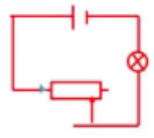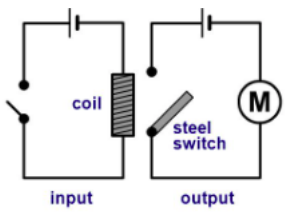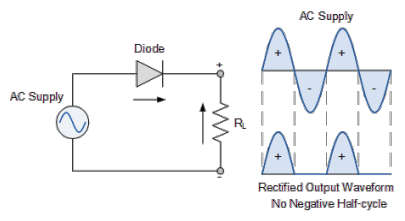Circuit Components (GCSE Physics)
Circuit Components
Potentiometers
As we learnt when comparing series and parallel circuits, when resistors are connected in series, the potential difference is shared between them.
If one resistor has a higher resistance, it will have a higher share of the potential difference,
A potentiometer is a type of variable resistor, by the use of a sliding contact.
The potentiometers we find in our school classrooms consist of a coil of wire with a sliding contact between two terminals. The sliding contact divides the potentiometer into two parts.
Moving the slider will change the resistances of the two parts, therefore changing the potential difference of each part.

In the above diagram, if the slider is moved to the right, the resistance of the left part will increase.
They can be used to control the volume on audio devices.
Relays
A relay is made of an electromagnet coil and a magnetic switch.
If a current flows through a coil, a magnetic field will be produced. This can attract a switch in a separate circuit, causing it to flow and allowing a current to pass through the circuit.

In this case, the current flowing the circuit will drive the motor.
Diodes
A diode only allows a current to flow if the potential difference is flowing in the direction of the arrow.
Remember we learnt that the current flows from the positive to negative terminal. Therefore, the diode must point towards the negative terminal to allow a current to flow.

An alternating current continuously switches the direction of the current. Since a diode only allows a current to flow in one direction, it will only allow a current to flow for half of the time. We can call this process rectification. This explains the graph we previously looked at when looking at current-voltage graphs.

Circuit components are the individual parts that make up an electrical circuit. In GCSE Physics, students learn about the different types of circuit components and how they function within a circuit.
A resistor is a circuit component that resists the flow of electrical current. In GCSE Physics, students learn about the role of resistors in controlling the current flow in a circuit and how they are used to adjust the voltage and current levels.
A capacitor is a circuit component that stores electrical energy. In GCSE Physics, students learn about the role of capacitors in smoothing the voltage fluctuations in a circuit and how they are used to control the frequency of oscillation.
An inductor is a circuit component that stores energy in a magnetic field. In GCSE Physics, students learn about the role of inductors in filtering electrical signals and how they are used to regulate the flow of electrical current.
A diode is a circuit component that only allows current to flow in one direction. In GCSE Physics, students learn about the role of diodes in protecting electronic devices from damage and how they are used in rectifying AC current to DC current.
A switch is a circuit component that allows or blocks the flow of electrical current. In GCSE Physics, students learn about the different types of switches and how they are used to control the flow of current in a circuit.
A transistor is a circuit component that acts as a switch and amplifier(that often uses vacuum tubes). In GCSE Physics, students learn about the role of transistors in controlling the flow of current in a circuit and how they are used to amplify signals.
Circuit components interact by controlling the flow of electrical current in a circuit. In GCSE Physics, students learn about the basic laws of electricity and how the components work together to perform specific functions within the circuit.





Still got a question? Leave a comment
Leave a comment